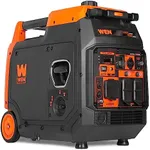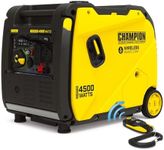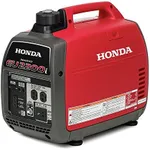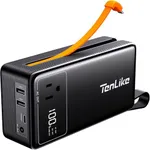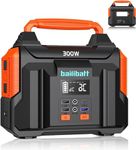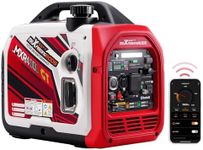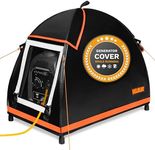Buying Guide for the Best Generator Inverters
Choosing the right generator-inverter can be a bit overwhelming, but with the right knowledge, you can find the perfect fit for your needs. Generator-inverters are versatile devices that provide portable power, making them ideal for camping, tailgating, or as a backup power source during outages. To make an informed decision, you need to consider several key specifications that will determine the performance and suitability of the generator-inverter for your specific requirements.Power Output (Wattage)Power output, measured in watts, indicates how much electricity the generator-inverter can produce. This is crucial because it determines what and how many devices you can power simultaneously. Generator-inverters typically range from 1,000 to 4,000 watts. For light use, such as charging phones or running small appliances, a lower wattage (1,000-2,000 watts) is sufficient. For more demanding tasks, like running multiple appliances or power tools, you’ll need a higher wattage (2,000-4,000 watts). Assess your power needs by listing the devices you plan to use and their wattage requirements.
Fuel TypeGenerator-inverters can run on different types of fuel, including gasoline, propane, and diesel. The fuel type affects the generator's efficiency, cost of operation, and convenience. Gasoline is widely available and easy to use, making it a common choice. Propane is cleaner-burning and can be stored indefinitely, but it may require additional equipment. Diesel is more efficient and has a longer shelf life, but diesel generators are typically larger and noisier. Consider the availability of fuel and your preference for storage and maintenance when choosing the fuel type.
RuntimeRuntime refers to how long the generator-inverter can operate on a full tank of fuel. This is important for planning how long you can rely on the generator without needing to refuel. Runtime varies based on the generator's fuel efficiency and the load it is powering. Look for models that offer a longer runtime if you need continuous power for extended periods, such as during an overnight camping trip or a prolonged power outage. For occasional or short-term use, a shorter runtime may be sufficient.
PortabilityPortability is a key factor if you plan to move the generator-inverter frequently. This includes the weight, size, and design features like handles or wheels. Lightweight and compact models are easier to transport and store, making them ideal for activities like camping or tailgating. Heavier models with wheels and handles are better suited for home backup power where mobility is less critical. Consider how and where you will use the generator to determine the level of portability you need.
Noise LevelNoise level, measured in decibels (dB), indicates how loud the generator-inverter will be during operation. This is important for user comfort and to comply with noise regulations in certain areas. Quieter models (50-60 dB) are ideal for camping, tailgating, or residential use where noise can be a disturbance. Louder models (above 70 dB) may be acceptable for construction sites or other areas where noise is less of a concern. Consider the environment in which you will use the generator and choose a noise level that is appropriate.
Inverter TechnologyInverter technology ensures that the power produced by the generator is stable and clean, making it safe for sensitive electronics like laptops, smartphones, and medical devices. This is important if you plan to power such devices, as fluctuations in power can cause damage. Inverter generators are generally more efficient and quieter than conventional generators. If you need to power sensitive electronics or prefer a quieter, more fuel-efficient generator, look for models with inverter technology.

